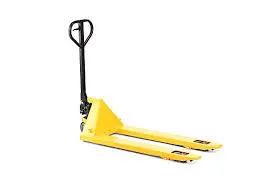


Electric Winch Operation A Comprehensive Guide
Electric winches have become indispensable tools in various industries, including construction, marine, and automotive sectors, due to their efficiency and reliability. Understanding the operation of an electric winch is crucial for ensuring safety and achieving optimal performance. This article provides an overview of electric winch operation, including its components, functions, safety precautions, and maintenance tips.
Components of an Electric Winch
An electric winch typically consists of several key components
1. Motor The heart of the winch, the electric motor converts electrical energy into mechanical energy to lift or pull loads. 2. Gearbox This component amplifies the motor's torque, enabling the winch to handle heavy loads with less strain on the motor.
3. Drum The drum is where the rope or cable is wound. It plays a vital role in the winch’s lifting capabilities.
4. Control System Most electric winches come with a remote control or wired control system that allows operators to manage the winch from a safe distance.
5. Rope or Cable The lifting medium, which can be made of steel cable or synthetic rope, depending on the winch's intended use.
6. Brakes Safety brakes are crucial for holding loads securely when the winch is stopped.
Operating an Electric Winch
Operating an electric winch is straightforward, but it requires attention to detail. Here are the basic steps
1. Set Up Position the winch securely on a stable surface. Ensure that the winch is rated for the load you intend to lift or pull.
2. Connection If not already installed, connect the winch to a suitable power source. Ensure that the power supply matches the winch’s specifications.
3. Load Attachment Attach the hook or other fastening devices to the load carefully. Make sure the load is balanced and secure.
4. Control Operation Use the remote or wired control to start the winch. Engage the motor smoothly to avoid sudden jerks that could destabilize the load.
5. Lifting/Pulling Gradually increase the motor's power to lift or pull the load. Monitor the load closely to ensure it is being handled safely.

6. Stopping Once the load reaches its destination, stop the winch operation using the control system. Ensure the load is securely positioned and that the brakes are engaged.
Safety Precautions
Safety should always be a priority when operating an electric winch. Here are essential safety tips
- Read the Manual Before operation, familiarize yourself with the manufacturer’s instructions and safety guidelines.
- Weight Limits Never exceed the winch's rated capacity. Overloading can lead to mechanical failure or accidents.
- Inspect Regularly Conduct routine inspections of the winch, including the motor, rope, and brakes, to identify any wear or damage.
- Stay Clear Ensure that all personnel are at a safe distance when the winch is in operation. A designated area should be established to prevent accidents.
- Use Protective Gear Operators should wear safety gear such as gloves, helmets, and steel-toed boots to enhance personal safety.
Maintenance Tips
Proper maintenance extends the life of your electric winch and ensures reliable performance. Follow these maintenance tips
- Routine Cleaning Keep the winch clean and free of debris. Regularly inspect the drum for any buildup of dirt or contaminants.
- Lubrication Apply lubricants to moving parts as specified by the manufacturer to reduce wear and tear.
- Cable Inspection Regularly check the rope or cable for frays, cuts, or corrosion. Replace damaged cables immediately to avoid failure.
- Electrical Checks Inspect electrical connections and wiring for any signs of wear or damage to ensure safe operation.
Conclusion
Electric winches are powerful tools that simplify lifting and pulling tasks across various applications. By understanding their operation, following safety precautions, and adhering to maintenance guidelines, operators can maximize the efficiency and lifespan of their electric winches while ensuring a safe working environment. Whether in a construction site or on a boat, mastering electric winch operation is key to successful load handling.



